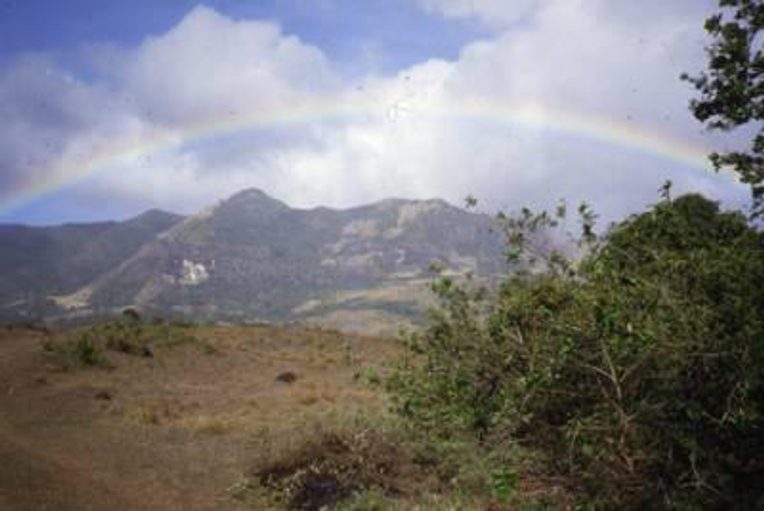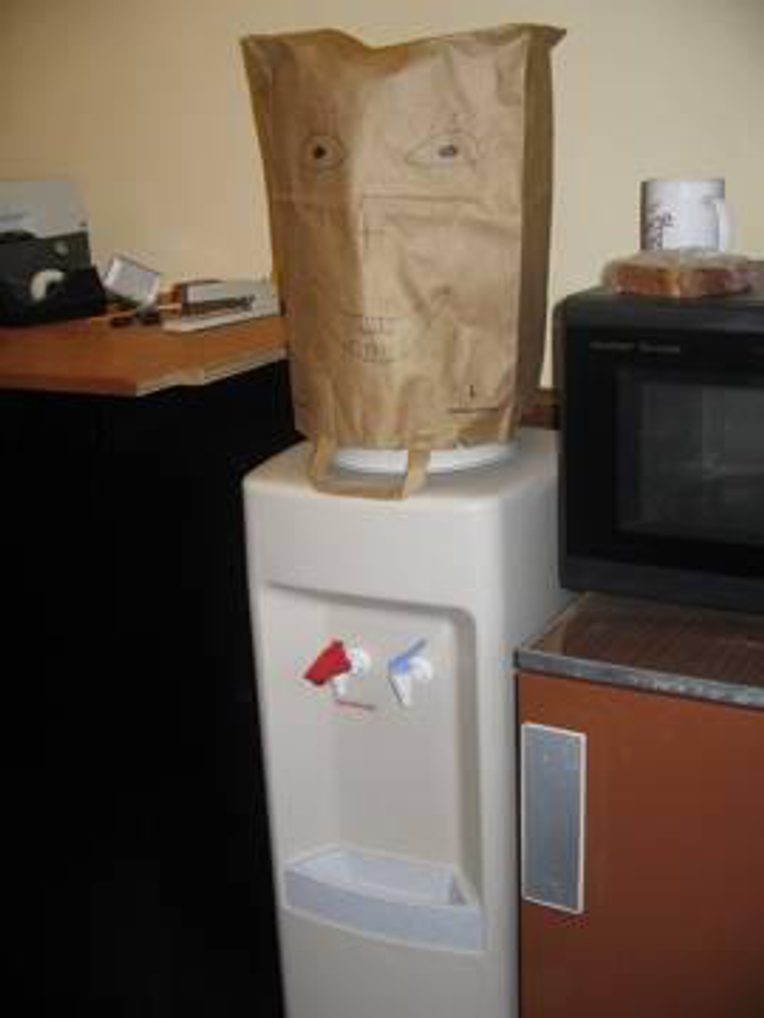This post builds on the research article “Fijian Water in Fiji and New York: Local Politics and a Global Commodity,” which was published in the November 2007 issue of the Society’s peer-reviewed journal, Cultural Anthropology.

Editorial Footnotes
Cultural Anthropology has published a Curated Collection on Water, which, in addition to this article, includes: Ananth Aiyer’s “The Allure of the Transnational: Notes on Some Aspects of the Political Economy of Water in India” (2007); David McDermott Hughes’ “Third Nature: Making Space and Time in the Great Limpopo Conservation Area” (2008); Stuart McLean’s “Stories and Cosmogonies: Imagining Creativity Beyond ‘Nature’ and ‘Culture’” (2009); and Hugh Raffles' "'Local Theory': Nature and the Making of an Amazonian Place" (1999).
Cultural Anthropology has also published a number of other essays that examine consumption and commoditization. See, for example, Debra Curtis’s “Commodities and Sexual Subjectivities: A Look at Capitalism and Its Desires” (2004); Pun Ngai’s “Subsumption or Consumption? The Phantom of Consumer Revolution in ‘Globalizing’ China” (2003); and Adeline Masquelier’s “Of Headhunters and Cannibals: Migrancy, Labor, and Consumption in the Mawri Imagination” (2000).
Interview with Martha Kaplan
Martha Kaplan discusses her article "Fijian Water in Fiji and New York" with Ashley Carse, Ph.D. Candidate at UNC-Chapel Hill, as part of a larger conversation about the anthropology of water published in Cultural Anthropology's September 2010 Curated Collection on Water. In the interview below, Kaplan discusses how she came to study Fijian water, the benefits and limitations of studying water ethnographically, Fijian cosmology of land and sea, and the diverse communities that come together around drinking fountains, bottles, and coolers.
Ashley Carse: Water can facilitate motion. Rivers, lakes, and oceans have historically enabled – even shaped – the movement of humans and non-humans through space. But water also constrains. It marks boundaries and edges. Anthropology, meanwhile, has traditionally demanded motion by the researcher across boundaries as we travel to and across “the field.” Using the research conducted for your CA article as a point of departure, help us reflect on the relationship between water and fieldwork. First: How has water materially shaped your fieldwork? Anthropological fieldwork generally? Second: What does (or might) an anthropology of water call for in terms of ethnographic method?
Martha Kaplan: Exploring the dynamics of water commoditization and consumption has reshaped “the field” for me. I never set out to study water. Working in the midst of Fijian histories, I found that they entailed Fijian and US water bottling histories; that led me to study US water practices at an upstate New York college, pursuing lonely drinking fountains, maniacal bottles and comforting coolers. To problematize this binary, I am now studying a very different water history, wondering about the power of images to make Singapore’s high tech recycled water palatable.
There are two ways to tell the story of how water materially shaped the fieldwork for “Fijian Water in Fiji and New York.” The first is water as a surprise: As an historical anthropologist of Fiji, inspired by Marshall Sahlins to think about indigenous history-making and by Bernard Cohn to think about colonial systems, I studied the cultural history of Fiji: first, the history-making of the Vatukaloko people, their famous ancestor Navosavakadua, and the anticolonial political-religious movement he led, sometimes called a cargo cult (Kaplan 1995). Later, the postcolonial dilemmas of multi-ethnic postcolonial Fiji, in context of a post WWII world re-organized into nation-states (Kelly and Kaplan 2001). But, in the 1990s, friends in Fiji began writing to me about “the Mineral,” a water factory newly built up at Yaqara, on their ancient lands. Like 19th century encroaching coastal chiefs, Methodist missionaries, British officials, and twentieth century Peace Corps volunteers, this new outside enterprise fell into the flow of Vatukaloko history. “Fijian Water in Fiji and New York” began with research shaped by the question of what the factory would mean in local politics, land tenure and civil rights struggles. The water questions overflowed from Fiji back to the US: why were US Americans buying water in bottles from Fiji? And this flowed over into the question of why they were buying water at all. As one material token of globalization and our field’s concerns with it, water provoked this particular inquiry into encounters of global scope, in which relations between people were via the bottles only. As the article argues, it became very clear that Americans love the water, and have very little interest in the people and history of its origin.
On the other hand, there is a different story in which water was not a re-organising surprise. Water, in Fijian cosmology, was always basic to the research, because the research started with wider cultural questions. The dissertation title was “Land and Sea and the new white men.” The Vatukaloko are “people of the land” and coastal Fijians and the British were “sea people” or stranger chiefs. Navosavakadua drew upon these categories. Via Sahlins’ insistence on the historicity of Fijian culture, Fijian categories of land and sea were central to the research. This reading of “sea” began, not with water, but with openness to the wider question of Fijian culture. So too, in thinking about the US Americans’ love for nature in the bottle, water is part of an American culture and history of appropriating indigeneity and recovering purity. But it is not the only token of “nature” and “native” that US Americans engage; others include the turkey and herbal supplements. As a research project, understanding Fijian Water in Fiji or New York could not start with the water. Water can be the subject or object or instrument, but not the location or the point. A necessary means, it interacts variously with humanly made and chosen ends and actors.
Looking back at the article, “Fijian Water in Fiji and New York” emphasized this social as well as material fluidity of the water, offering its transnational biography via its meanings and consequences for different people. But in later research, “Lonely Drinking Fountains and Comforting Coolers: Paradoxes of Water Value and Ironies of Water Use” (forthcoming in CA), my fieldwork is organized around drinking water delivery technologies. I moved among drinking fountains, vending machines and water coolers and met people who lived/worked near them. I tried to understand the people first of all in terms of their water choices. Social relations obtain among, for example, well users, public water customers, fluoridaters, anti-fluoridaters, and cooler organizers. This water census, as I playfully called it, was very fruitful ethnographically. Interestingly, though, one article reviewer grumped that the research was simply a brief survey, an enumeration. I had to work hard to convey the experience of rich ethnographic encounters with fountains, machines and coolers and the individuals and groups assembled by and around these water technologies.

AC: Stefan Helmreich recently argued that water has sometimes served in cultural anthropology as a “theory machine” (the term is historian of science Peter Galison's): an object in the world that stimulates a theoretical formulation. In recent years, “watery metaphors” – flows, fluidity, circulation, etc. – have been mobilized by anthropologists and others with increasing frequency to theorize the era of globalization. Has water prompted or formatted your own thinking about social dynamics? If so, how? What do you see as the advantages – or risks – of using watery metaphors in theorizing society, culture, and political economy?
MK: Metaphors of flows and fluidity are far from precise, ethnographically. On the one hand, water is not the only source of the metaphors of flows, fluidity and circulation. Indeed not just liquids provide these metaphors. Electricity may be more useful; certainly it brings with it both fluidity and, importantly, power. Electricity as metaphor also insists on an engineered quality to the flowing entity and its circuits. This is a useful contrast to alert us to our tendency to think of water as “natural”. Thinking of Janet Abu-Lughod’s circuits of interchange in the 12th century Asia centered world system, the interlocking political economic circuits have a grounding and impact that doesn’t need a water referent. On the other hand, actual water can challenge our metaphors, if we consider water in use. Water in use, as I have encountered it, does not always flow or circulate. Water in single serve, individual PET bottles deliberately doesn’t flow between people. This contained, owned, private quality is the point, the purpose of the bottles. Water in fountains in the Jim Crow South didn’t flow across boundaries; it was used to mark them, even make them. Water from workplace spring water coolers is curiously private yet public, individual yet shared, cupped yet generously served and flowing. So water does not offer a consistent metaphor. But if we find our metaphors ethnographically, we amplify our understanding of some groups, relationships and projects.
AC: At the conclusion of a water panel at the 2009 AAA meetings, discussant Kim Fortun provoked panelists with the following questions: What would it look like if anthropologists took water seriously as a topic of research and action…as seriously as, for example, capitalism? What theoretical, political, and/or personal reasons attracted you to study water? What do you see as the political stakes and potentials – if any – in how anthropologists engage water?
MK: On the one hand, Bruno Latour’s work on the agency and power of things and the bringing into being of new realities pushes a scholar focused on people to think in new ways about things, publics and politics. “Each object gathers around itself a different assembly of relevant parties. Each object triggers new occasions to passionately differ and dispute. Each object may also offer new ways of achieving closure without having to agree on much else. [O]bjects-taken as so many issues-bind all of us in ways that map out a public space profoundly different from what is usually recognized under the label of “the political.” (Latour and Weibel 2005:15). But of course Latour is talking about all objects, not just water. Objects as a whole may be a big enough topic to rival capitalism, but I doubt that water is.
The issue is not only scale. Studying capitalism, or a culture, inquires about a system. Studying objects, including water, tracks relationships beginning with material existence, its protean possibilities and specific potentials. This orients to means and the realizations of possibilities, not ends making history and made by it. Vicissitudes of significance are tracked differently thinking about the rise and fall of systems versus the rise and fall of things. Many things move easily and all have their own careers, as do agents inside systems, sometimes outside of them, often in creative dialogue (see Kaplan and Kelly 1999). The utilities and potentials of things are unbounded, but uses of a thing are particularized by agents’ ends. Value is always local, established within a system.
Stakes that matter to me go beyond anthropology and social theory and involve understanding how US Americans make political choices and constitute publics/communities. Looking back at the Fijian water paper, my cultural studies analysis of the marketing of Fiji Water as “untouched,” and consumer desire for that quality in the water, is disapproving. The US water drinkers in this paper are participating in a particularly American exercise of power over nature and others. In hindsight, some of the certainty of the analysis may come from the strengths and weaknesses of cultural studies analysis, and some from a reading of US-world relations of the time. Later, actual ethnographic research, on water choices in practice, in the emerging recession and the simultaneously hopeful political days in the run up to the 2008 election, showed me some US examples of purchased water that constituted caring communities. Even some kinds of water fetishism could be read, surprisingly, as attempts to “steal life from the gods” (in AM Hocart’s phrase). So, when it comes to stakes, insights into ways of assembling coalitions matter, for social theory generally, for global studies with their particularly long dynamics, and for understanding local politics, including those in the US. Water is not the only topic by which to gain such insights, but it has its uses.

Editorial Overview
In the November 2007 issue of Cultural Anthropology, Martha Kaplan poses the question, “Why do Americans buy Fijian water?” Kaplan’s essay, “Fijian Water in Fiji and New York: Local Politics and a Global Commodity,” examines how water in Fiji has been transformed from an object of local ritual to a commodity produced by a foreign corporation. It also described how U.S. consumers have embraced bottled water as a vital commodity.
Drawing on her extensive expertise on Fijian culture and history, Kaplan offers what she calls a “transnational biography of Fijian water” to illustrate various meanings ascribed to Fijian water since colonial times. While Fijians have lost access to land and water through postcolonial capitalist practices, Kaplan argues, U.S. consumers have gained access to an exotic commodity of “pleasure, fulfillment, and health.” The essay explores the various ways in which Fijian water has been advertised as exotic and pure without mention, to Kaplan’s concern, of the Fijian people who depend on such a resource. Kaplan situates this story in the context of dramatic increases in bottled water consumption in the United States and many other countries in recent years. She also describes how beverage corporations (including The Coca-Cola Company) marketed water as a “health and wellness” product to health conscious consumers. The essay will be especially relevant to readers interested in commoditization of resources, politics of water, global beverage industry, commodity symbolism, and Fiji.